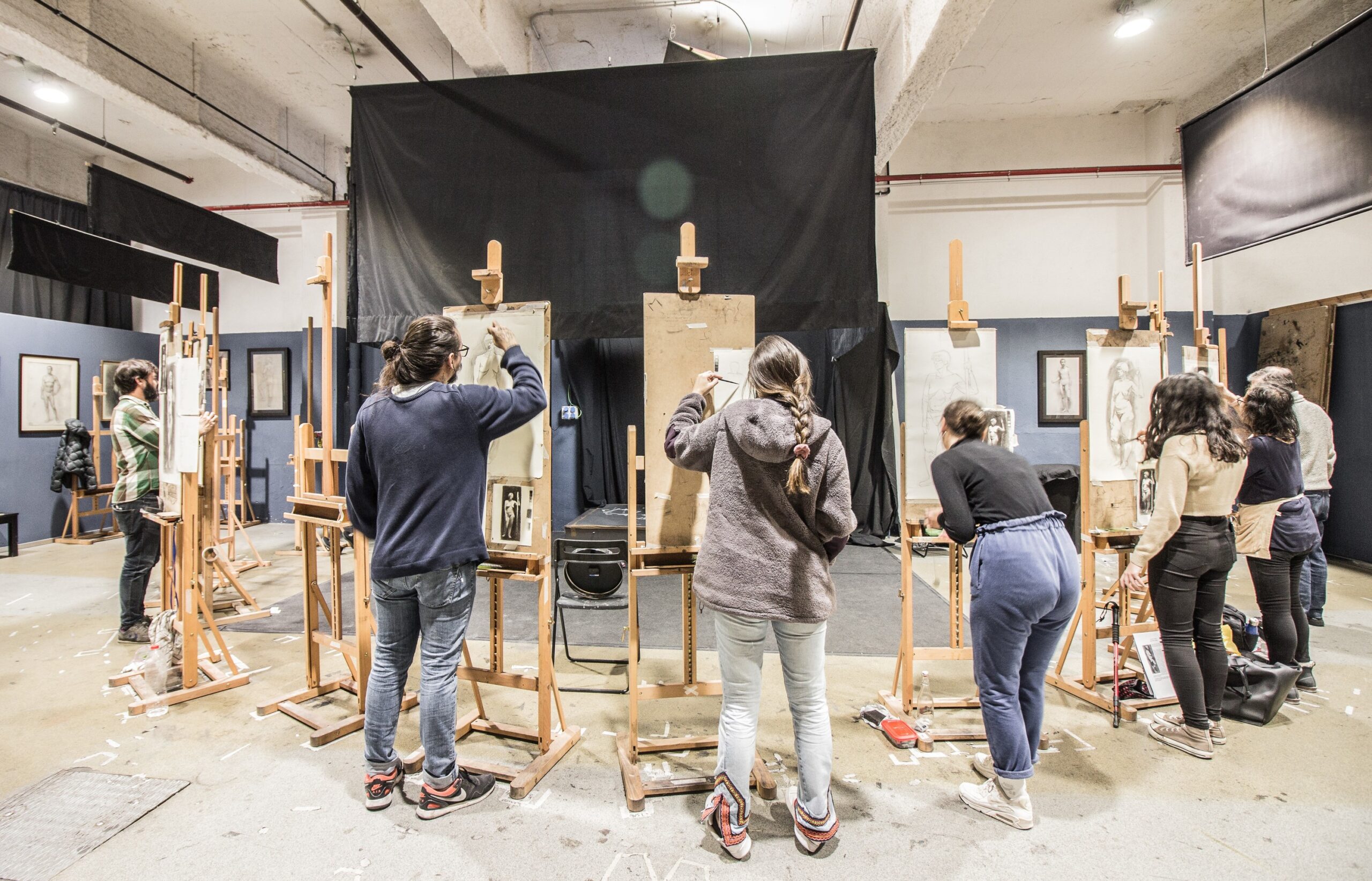The school, located in the center of Barcelona, has a methodology based on the Renaissance and the teaching of master painters such as Jean-Leon Gérôme, Léon Bonnat or Carolus-Durán.
For Díaz Alamá, figurative art is the future, and his proposal is to return “to the classics, to the basis of art”.
The school, which has a waiting list and some 280 students, 80% of them foreign, teaches drawing, painting and sculpture.
Students are enrolled in trimesters and have thirty teachers and twenty models at their disposal. The Barcelona Academy of Art is one of only eight schools worldwide that follows this teaching methodology.
The beginnings of the Barcelona Academy of Art
The school started in Poble Nou, but due to its growth, it moved to an old textile warehouse in the Eixample district of Barcelona.
The façade of the building attracts the attention of passersby, and the paintings at the entrance, many of them by Díaz Alamá himself, express the school’s philosophy: portraits, paintings that exhibit the human soul.
Teaching at the Barcelona Academy of Art is based on the idea that figurative art is the basis of art, and that in order to develop a project of their own, artists must return to the beginning and to the basics of drawing.
The school has hosted such successful projects as the exhibition on the Divine Comedy at the European Museum of Modern Art, and has students from all corners of the world.
The art school tried to become a university center, but in 2019, the Generalitat did not authorize the change due to urban planning issues.
However, Díaz Alamá has plans for the school, which will also function as an art gallery.
The center, where his own studio is located, seeks to remain a reference in the world of figurative art.
The BAA filled a big gap
The Barcelona Academy of Art (BAA) was founded in 2003 by the Spanish painter Jordi Díaz Alamá.
He himself was trained at the San Jorge School of Fine Arts in Barcelona, where he received a classical and realistic education, and later studied at the Academy of Fine Arts in Florence, Italy.
Upon his return to Barcelona, Díaz Alamá realized that there was no institution offering a rigorous education in figurative drawing and painting, and decided to found the BAA to fill the void.
The idea was to create a school that would follow the academic tradition of the Renaissance and the leading academic realist ateliers of the 19th century. And it was achieved.

